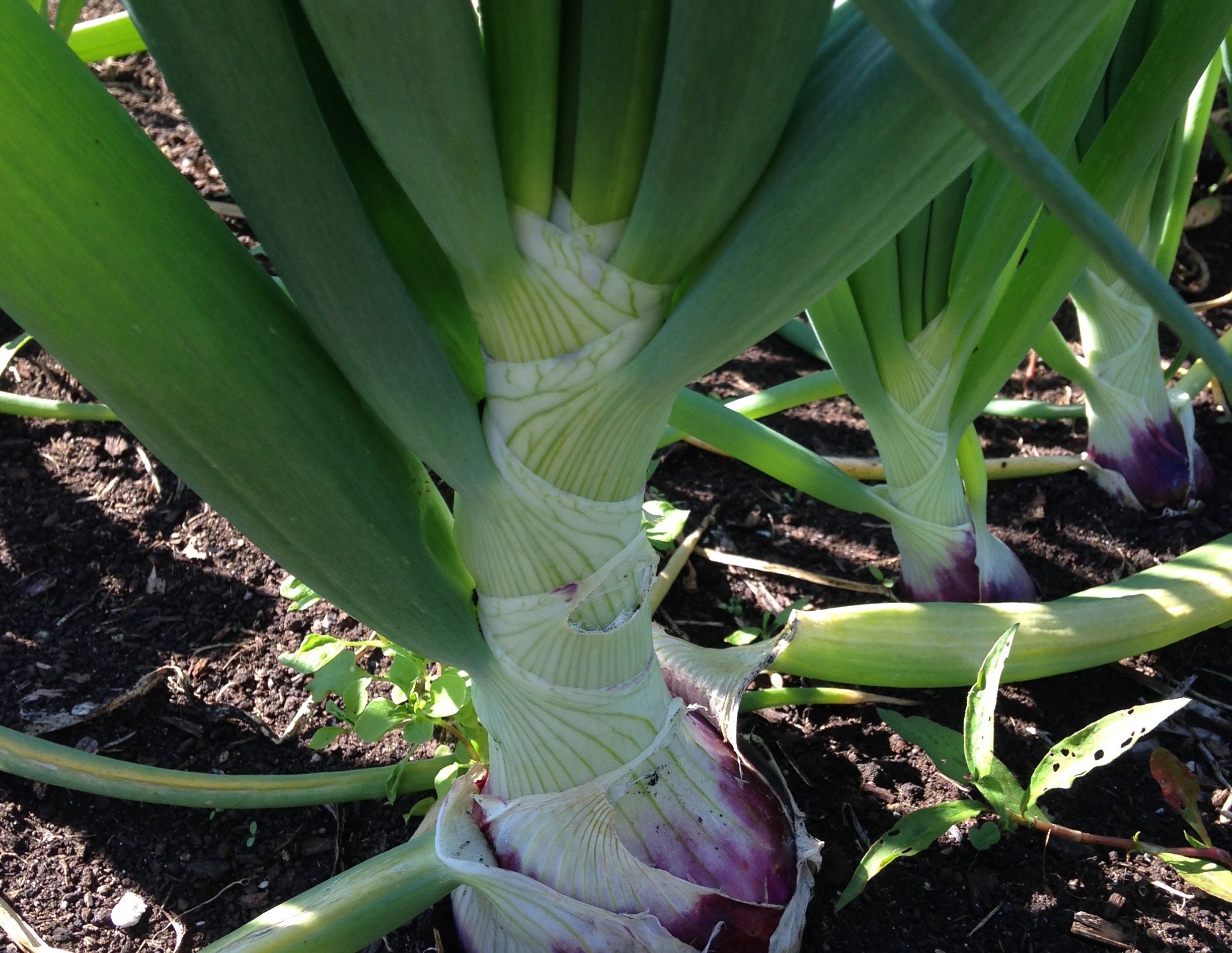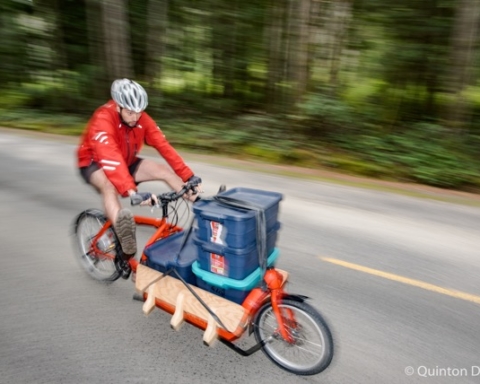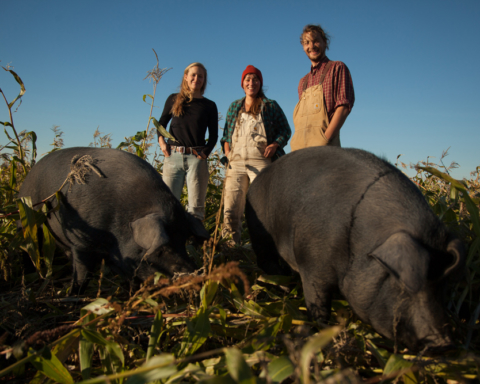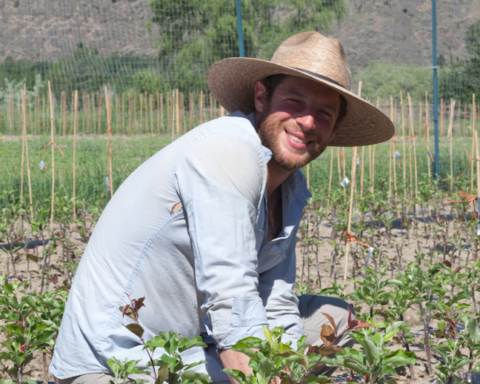Intergenerational Soil Stewardship: Our Only Hope?
Marjorie Harris BSc, IOIA V.O. P.Ag
Soil, specifically topsoil, is the foundation of life on this earth. Earth is the only planet with healthy fertile soil on it that we know of yet, in the whole of the universe. Fertile soil is a little-understood mixture of biology and geology whose potential only exists in the topsoil layer. The topsoil layer is composed of the topsoil itself and organic matter in various stages of mineralization and humus production. Degradation and erosion of the topsoil depletes soil fertility, restricting plant growth, vitality, and micronutrient content.
The theme for this month’s BC Organic Grower is: “Bioregionalism: building place based economies.” Agricultural philosopher Wendell Berry suggests that an agrarian economy is based on local adaptation of economic activity to the capacity of the land to sustain such activity.
This is a challenging idea because history shows us that farming as practised in the past and the present always causes topsoil degradation. Through the ages, soil degradation, or erosion, has steered the fate and course of human civilizations and ultimately caused the demise of those civilizations. This story has repeated itself throughout the world and in the history of every type of farming. In the words of Sir Winston Churchill, “Those who fail to learn from history are doomed to repeat it.” No greater historical comment can be made for agriculture: learn or be doomed. All farming societies exhausted their topsoils within 800 to 1700 years.
The Canadian Organic Standards speak to soil conservation and soil fertility specifically in the following sections:
The general principles of organic production in Annex 1:
1. Protect the environment, minimize soil degradation and erosion, decrease pollution, optimize biological productivity, and promote a sound state of health.
2. Maintain long-term soil fertility by optimizing conditions for biological activity within the soil.
Clause 5.4.3 Tillage and cultivation practices shall maintain or improve the physical, chemical and biological condition of soil, and minimize damage to the structure and tilth of soil, and soil erosion.
Principle of Health
Organic agriculture should sustain and enhance the health of soil, plants, animals, humans and the planet as one and indivisible.
We have run out of new lands to discover on planet Earth. In 1995, Dr. David Pimental of Cornell University calculated that we had already lost 30% of the arable land we were farming to soil erosion. With the advent of chemical and mechanical agriculture the soil erosion problem has increased a hundred-fold in areas. As an example, in the past 150 years, one-half the fertile topsoil of Iowa has been lost to erosion.
Topsoil is a strategic and underappreciated resource. Soil can be conserved, made, and lost and it is the balance of these factors that determines the soils fertility. How we manage the soil resource in our generation will affect generations to come. As long as soil erosion continues to exceed soil production, it is only a matter of time before agriculture fails to support Earths humanity.
What Can We Learn from the Trials and Errors of Our Ancestors?
Çatalhöyük, Anatolia (modern Turkey) was home to a Neolithic farming civilization that lasted around a thousand years starting about 7500 BC. Scientists have studied skeletal remains which have provided a highly informative record of human health. From the skeletal health record they have been able to divide this civilization into three distinct health time periods: Early, Middle and Late. During the Middle period the civilization reached its peak in population and health, and then as soil fertility was depleted the human skeletal health parameters demonstrated decline. By the end of the Late period 52% of human births resulted in infant mortality before the age of two months. Similar skeletal health studies have been conducted on the remains of other farming civilizations globally with outcome of human health declining in parallel with topsoil and soil fertility depletion, supporting the assumption that human health is interdependent on topsoil retention and soil fertility.
Dr. David R. Montgomery succinctly identifies the problem and a potential solution in his book Dirt: The Erosion of Civilizations: “Sustaining our collective well being requires prioritizing society’s long term interest in soil stewardship; it is an issue of fundamental importance to our civilization. We simply cannot afford to view agriculture as just another business because the economic benefits of soil conservation can be harvested only after decades of stewardship, and the cost of soil abuse is borne by all.”
What Does a New Sustainable Agriculture Ethic Require from Us?
In Dr. David Montgomery’s more recent publication “Growing a Revolution: Bringing Our Soil Back to Life,” he outlines solutions to soil conservation and topsoil rebuilding techniques he has witnessed applied in the field around the world. He identifies the main culprit of soil erosion in agriculture as the invention of the plow. The plow breaks the soil structure and exposes the underground community of biota to the surface. “The plow is the villain that set the seeds for soil degradation. Only deserts have bare earth and Nature tends to clothe herself in plants.”
Another challenge is that during one generation a farmer can seldom see the effects of topsoil erosion unless a dramatic natural weather event sweeps the soil away. During day to day farming it is difficult to ascertain the minimal yet additive effects of traditional tillage techniques. Fallow land tillage is a traditional technique that leads to desertification and needs to be abandoned and replaced with topsoil preserving methods. Topsoil conservation and rebuilding requires the focused consciousness of Intergenerational Soil Stewardship to guide agricultural sustainability.
Soil is in a Symbiotic Living Relationship with Plants
When plants are actively photosynthesizing they release 30% to 40% of the sugars, carbon compounds, and proteins they manufacture through their roots into the root rhizosphere. The root exudes these nutrients to feed the underground community of fungi and microbes in exchange for micronutrients from fungi and microbial metabolites that act as growth stimulators and plant health promoters.
When plants are fed synthetic N, P, K they grow big on top of the ground but do not invest in growing a big root system and do not deliver as much nutritious root exudates to feed the underground microbial and fungi communities. As a result the plant does not reap the benefits of vitality factors and micronutrients. The plants overall health is less and the plant tissue has demonstratively less micronutrient content to pass on up the food chain. Micronutrient studies demonstrate that under conventional agriculture the plants have lost between 25% to 50% of their micronutrient content in the past 50 years.
The solution to successful topsoil building Dr. Montgomery observed while touring farms around the world required three things to happen at once: no till planting techniques, cover cropping, and adding organic matter to the soil. Dr. Montgomery has coined the method Conservation Agriculture and the methods can be applied in both conventional and organic farms—because when it comes to soil conservation and restoration, everybody needs to get on board.
Principles of Conservation Agriculture:
1. Minimal or no disturbance/direct planting of seeds (e.g., no till)
2. Permanent ground cover: retain crop residues and include cover crop in rotations
3. Diverse crop rotations: to maintain soil fertility and break up pathogen carryover
4. Livestock assisting in topsoil building: mimic bison grazing, move cattle in a tight herd to intensive graze (high disturbance), and move frequently to produce low frequency grazing.
Benefits of Conservation Agriculture, after a short transition period of 2 to 3 years to allow soil organic matter to build fertility:
1. Comparable or increased yields
2. Greatly reduced fossil fuel and pesticide use
3. Increased soil carbon and crop resilience
4. Higher farmer profits
“This is not a question of low tech organic versus GMO & agro-tech….this is about ‘how to apply an understanding of soil ecology to the applied problem of increasing and sustaining crop yields in a post-oil environment’.”
“Agriculture has experienced several revolutions in historical times: the yeoman’s revolution based on relearning Roman soil husbandry and the agrochemical and green revolutions based on fertilizer and agrotechnology. Today, the growing adoption of no-till and organic methods is fostering a modern agrarian revolution based on soil conservation. Whereas past agricultural revolutions focused on increasing crop yields, the ongoing one needs to sustain them to ensure the continuity of our modern global civilization. The philosophical basis of the new agriculture lies in treating soil as a locally adapted biological system rather than a chemical system.”
Intergenerational Soil Stewardship: Society on a global scale based on an agrarian economy adapted to its bioregion dedicated to topsoil conservation and restoration and the development of soil fertility.
Marjorie Harris is an organophyte, agrologist, consultant, and verification officer in BC. She offers organic nutrient consulting and verification services supporting natural systems.
References:
1. Montgomery, D. (2007). Dirt: The Erosion of Civilizations. University of California Press. Montgomery, D. (2017). Growing a Revolution: Bringing Our Soil Back to Life. W. W. Norton & Company.
3. Pimental, D., Burgess, M. (2013). Soil Erosion Threatens Food Production. Agriculture, 3(3), 443-463; doi: 10.3390/agriculture3030443
4. Montgomery, D. (2014). Soil erosion and agricultural sustainability. PNAS. 104 (33) 13268-13272; https://doi.org/10.1073/pnas.0611508104










